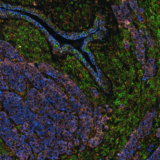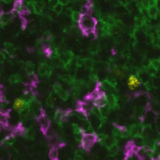Poster
Immunosuppressive brain tumor microenvironment: a barrier to overcome
Posted on:
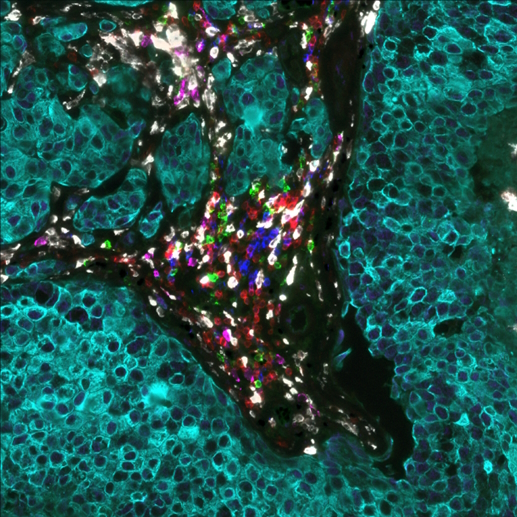
Glioblastoma (GB) and brain metastases (BM) represent the prevalent malignant tumors affecting the central nervous system in adults. For BM, despite the availability of advanced diagnostic techniques and optimal multidisciplinary treatment approaches, which involve surgical resection and radiotherapy (RT)1, the unfortunate reality is that almost all patients eventually face tumor progression. Within the complex realm of brain tumors, an intriguing aspect that researchers have uncovered is the presence of an immunosuppressive tumor microenvironment (TME)2 (Figure 1). The TME creates a unique environment that hampers the immune system’s ability to respond effectively against the tumor. By studying the spatial distribution via multiplex immunofluorescence (mIF) of immune cells, tumor cells, and molecular markers within the brain TME, researchers can gain valuable insights into the mechanisms behind immunosuppression and identify potential therapeutic targets.

Researchers unveil spatial architecture of TME in brain metastasis using seqIF™
In a recent study presented by the Institute of Neurology (Edinger Institute), University Hospital, Goethe University Frankfurt, Germany, at the AACR 2023 Annual Meeting, researchers investigated the spatial architecture of the TME in lung and breast-to-brain metastasis using sequential immunofluorescence (seqIF™) on COMET™. SeqIF™ offers a novel, straightforward method to detect multiple proteins on a single slide with minimal optimization requirements. The process involves staining a tissue section by incubating it with primary antibodies, then detecting markers using fluorescently labeled secondary antibodies. Then images are acquired via the imaging step, and antibodies are removed through a gentle elution step using an elution buffer. This approach allows additional rounds of staining to visualize new sets of antigens, with the ability to use antibodies from different species within each cycle. By stacking the acquired images and creating overlays, spatial relationship maps can be constructed to examine the spatial distribution of the proteins.
The study was performed using Lunaphore SPYRE™ Immuno-Oncology Core Panel with clinically relevant biomarkers and additional markers targeting myeloid, vascular, and tumor cells, as well as cytokines and immune checkpoints (Figure 2). The high-quality images obtained from the staining panel, encompassing all biomarkers, were analyzed with HALO® Image Analysis platform, developed by Indica Labs, Inc (Figure 3).
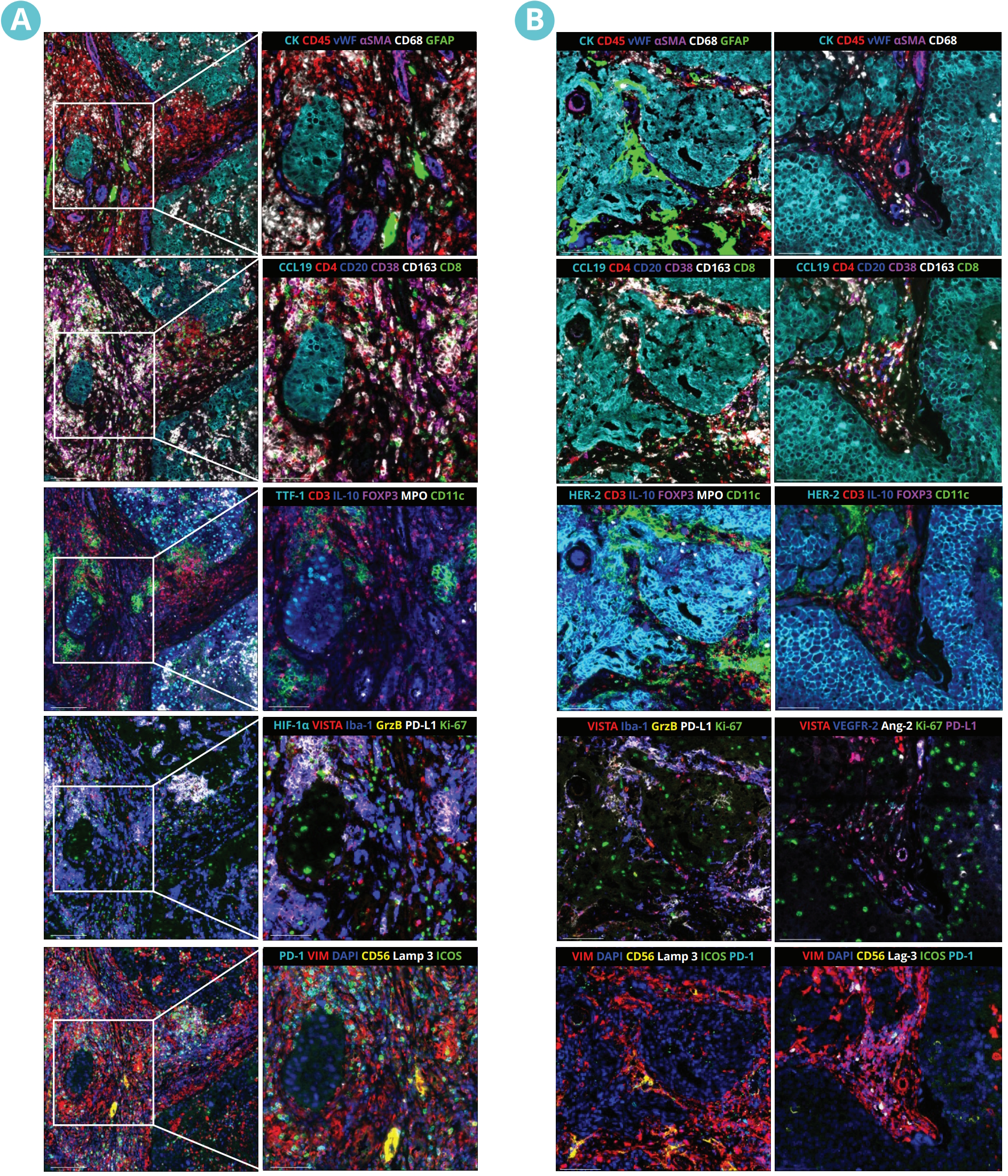
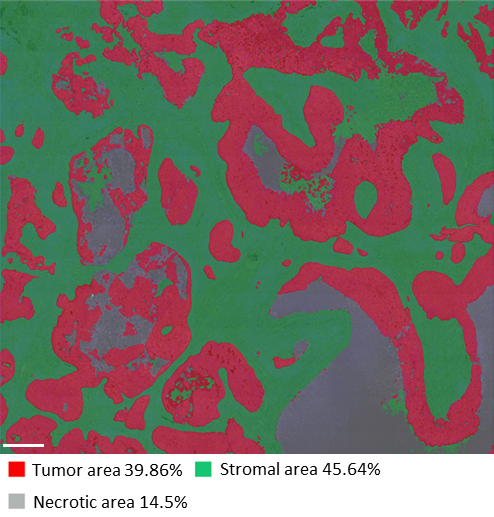
The development of targeted therapies that effectively treat brain malignancies based on the unique characteristics of individual tumors has not yet been realized. Despite numerous research efforts and clinical trials, experimental and therapeutic approaches must be refined to address this challenge. Researchers can understand the underlying mechanisms driving immune evasion by employing multiplex immunofluorescence to study the immunosuppressive brain tumor microenvironment. This study has validated a 29-plex panel for multispectral analysis of cell interactions within the brain TME. It lays the foundation for a comprehensive understanding of the pathobiology of brain tumors. Gaining insights into the TME of brain metastasis and analyzing cellular neighborhoods within specific samples are crucial for determining treatment responses and identifying potential novel biomarkers in clinical trials for brain cancer.
- Learn how seqIF™ on COMET™ allows for rapid evaluation of marker expression in brain TME;
- Uncover the feasibility of integrating additional biomarkers into the Lunaphore 13-plex SPYRE™ Immuno-Oncology Core Panel. Find out the full list of markers used in the study;
- Discover features of the HALO® Image Analysis platform.
References:
- Amsbaugh MJ and Kim CS. Brain Metastasis. 2023. In: StatPearls [Internet]. Treasure Island (FL): StatPearls Publishing. PMID: 29262201.
- Niesel K et al. The immune suppressive microenvironment affects efficacy of radio‐immunotherapy in brain metastasis. EMBO Mol Med. 2021.
Related Articles
Cytokines, spatial activation and tumor infiltration: the future of immunotherapy
Posted on 13 Dec 2023
Read Post